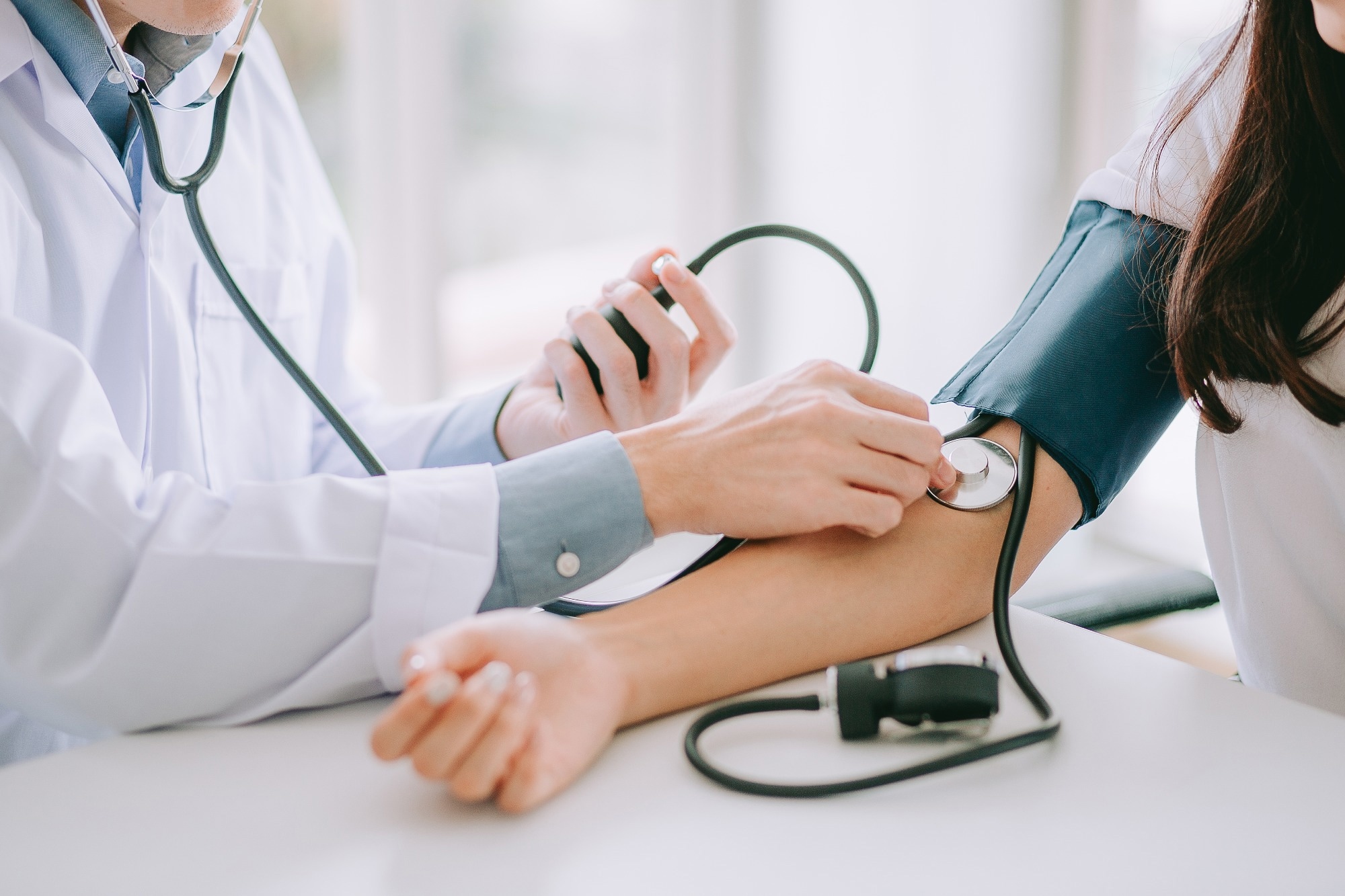A recent review published in the International Journal of Environmental Research and Public Health evaluated the current research on incidences of hypertension, new-onset diabetes mellitus, and dyslipidemia as possible sequelae of coronavirus disease 2019 (COVID-19).
 Study: New-Onset Diabetes Mellitus, Hypertension, Dyslipidaemia as Sequelae of COVID-19 Infection—Systematic Review. Image Credit: Chompoo Suriyo/Shutterstock
Study: New-Onset Diabetes Mellitus, Hypertension, Dyslipidaemia as Sequelae of COVID-19 Infection—Systematic Review. Image Credit: Chompoo Suriyo/Shutterstock
Background
A significant portion of individuals who have recovered from severe acute respiratory syndrome coronavirus 2 (SARS-CoV-2) infections experience debilitating fatigue, neurological and cardiac complications, headaches, and muscle and joint pain for four weeks or more after recovery; this has now been characterized as long-COVID.
While many studies have reported new-onset diabetes mellitus, dyslipidemia, and hypertension in acute COVID-19 patients, there is a scarcity of reviews exploring the co-occurrence of these diseases during long-COVID. Understanding the increased risk of diabetes mellitus, hypertension, and lipid imbalance after SARS-CoV-2 infections is essential to develop effective post-COVID management strategies.
About the study
The present review examined recent studies on persistent changes in lipid profiles, blood glucose levels, and blood pressure to determine whether long-COVID manifestations include dyslipidemia, new-onset diabetes mellitus, and hypertension.
Studies published after the onset of the COVID-19 pandemic investigating biochemical parameters such as fasting blood glucose, lipid profiles, levels of C-peptide, and blood pressure in patients during the months after recovering from COVID-19 were included in the study. Positive quantitative reverse-transcription polymerase chain reaction (qRT-PCR) tests were used to define SARS-CoV-2 infections.
Outcome measures considered included alterations from baseline biochemical values and incidences of arterial hypertension, diabetes, and lipid level abnormalities in the months following recovery from COVID-19.
Results
The results indicated that new-onset diabetes mellitus, dyslipidemia, and hypertension are possible long-COVID outcomes. A significant number of patients exhibited hyperglycemia during the months after recovery, and meta-analysis indicated a 59% increase in the risk of developing diabetes mellitus after SARS-CoV-2 infection. Studies also noted elevated systolic blood pressure and changes in diastolic blood pressure in the three months after recovery.
Compared to mild SARS-CoV-2 infections, severe COVID-19 cases requiring hospitalization were also associated with significant elevations in levels of triglycerides, low-density lipoprotein C, and total cholesterol between three to six months from discharge.
The authors also hypothesized possible mechanisms through which SARS-CoV-2 infections could precipitate these diseases. Angiotensin-converting enzyme-2 (ACE-2) receptors are expressed in the islet cells of the pancreas, and the enzyme is essential for mediating insulin secretion and maintaining glucose homeostasis. Human pluripotent stem cells derived from pancreatic cells have been infected with SARS-CoV-2 in vitro, and samples from the pancreas of COVID-19 patients showed the presence of SARS-CoV-2, indicating that the virus can damage the pancreas and disrupt insulin production.
Additionally, the increased secretion of cytokines during COVID-19, known as a cytokine storm, results in a surge in inflammation, which could trigger insulin resistance and overstimulate the beta cells. Furthermore, post-translational protein modifications during SARS-CoV-2 infections could also activate T-cells, causing autoimmune disorders such as diabetes mellitus type 1. Glucocorticoids used to treat COVID-19 can trigger glucocorticoid-induced hyperglycemia, worsening insulin resistance and increasing gluconeogenesis.
The binding of the SARS-CoV-2 spike protein to the ACE-2 receptor also deregulates the renin-angiotensin-aldosterone system (RAAS) signaling pathway, causing the accumulation of angiotensin II. Increased angiotensin II levels cause constriction of blood vessels, hypertension, and collection of reactive oxygen species, resulting in endothelial damage. Hypertension increases the risk of cardiovascular disease, stroke, coronary artery disease, and heart failure.
Potential mechanisms of SARS-CoV-2 infections triggering dyslipidemia were also discussed in the review. One of the proposed hypotheses suggests that the virus targets the lipid synthesis in the host cells to produce lipids for the viral envelope, altering the lipid metabolism in the body. The cytokine upregulation during COVID-19, which causes an excessive inflammatory response, could also dysregulate lipid production. Moreover, SARS-CoV-2 infections can cause liver injury, further disrupting lipid metabolism.
Conclusions
To summarize, the review explored the latest research on changes in biochemical markers such as blood glucose levels, blood pressure, and lipid profiles in COVID-19 patients during the months after recovery to determine whether new-onset diabetes mellitus, dyslipidemia, and hypertension could be post-COVID sequelae.
The results indicated that SARS-CoV-2 infections dysregulate glucose and lipid metabolisms and increase vasoconstriction. The affinity of the SARS-CoV-2 spike protein for the ACE-2 receptor and the exaggerated secretion of cytokines play a significant role in the damage caused to the pancreas, endothelium, and liver.
Treatments such as corticosteroids used to treat COVID-19 could also potentially dysregulate the metabolic processes in the body. The review provides evidence that long-COVID symptoms include new-onset diabetes mellitus, hypertension, and lipid imbalance. Further research is needed to understand the long-term consequences of these dysregulations in recovering COVID-19 patients.